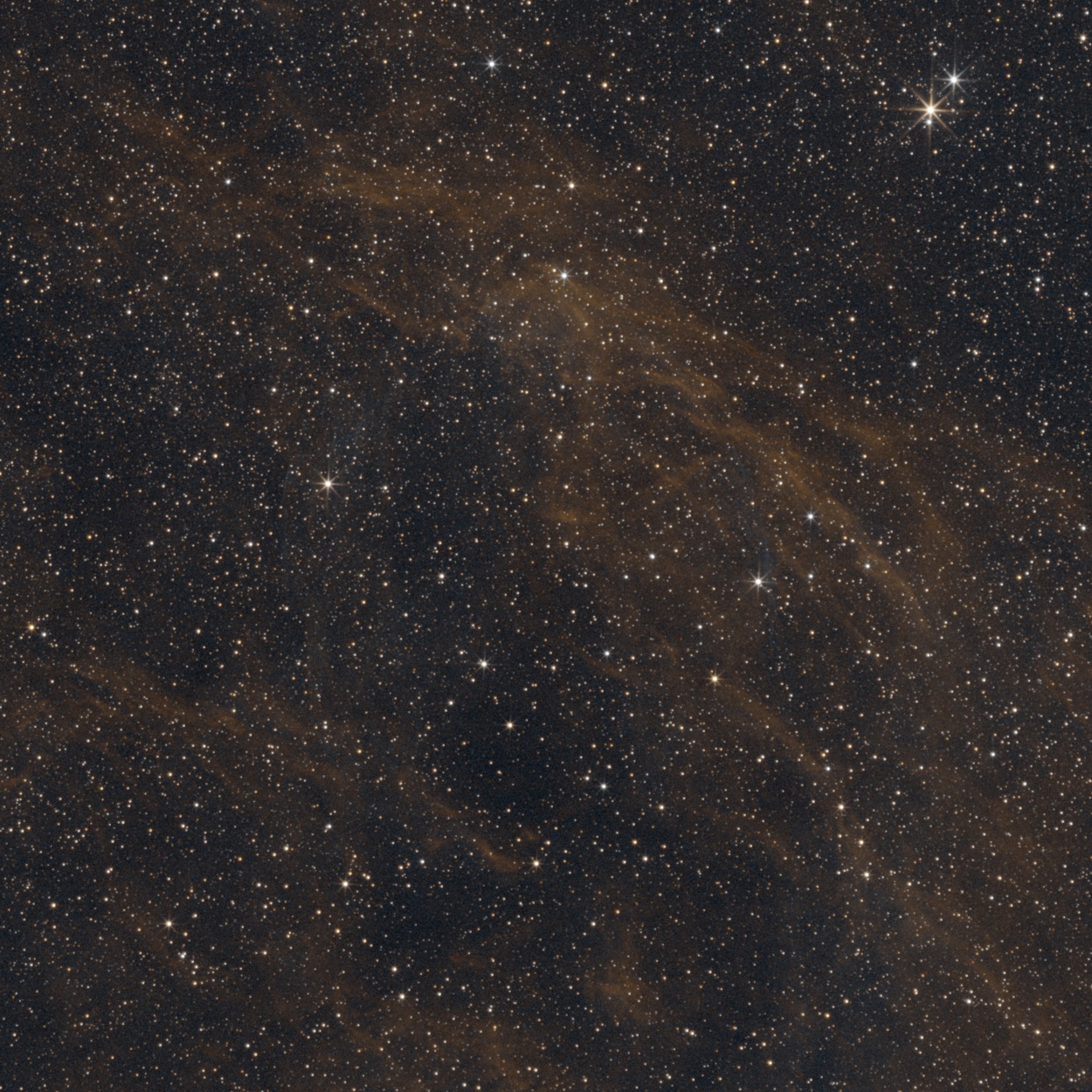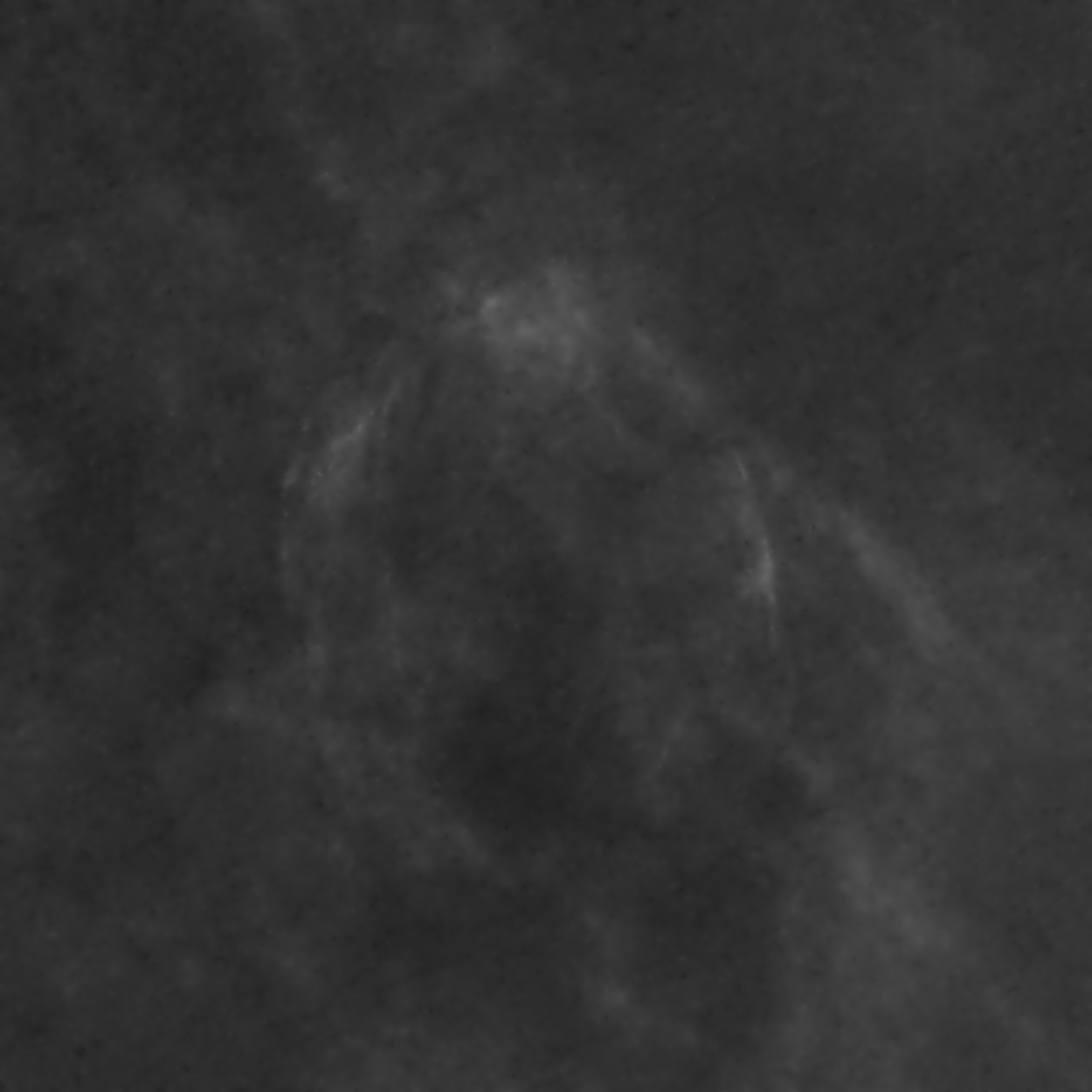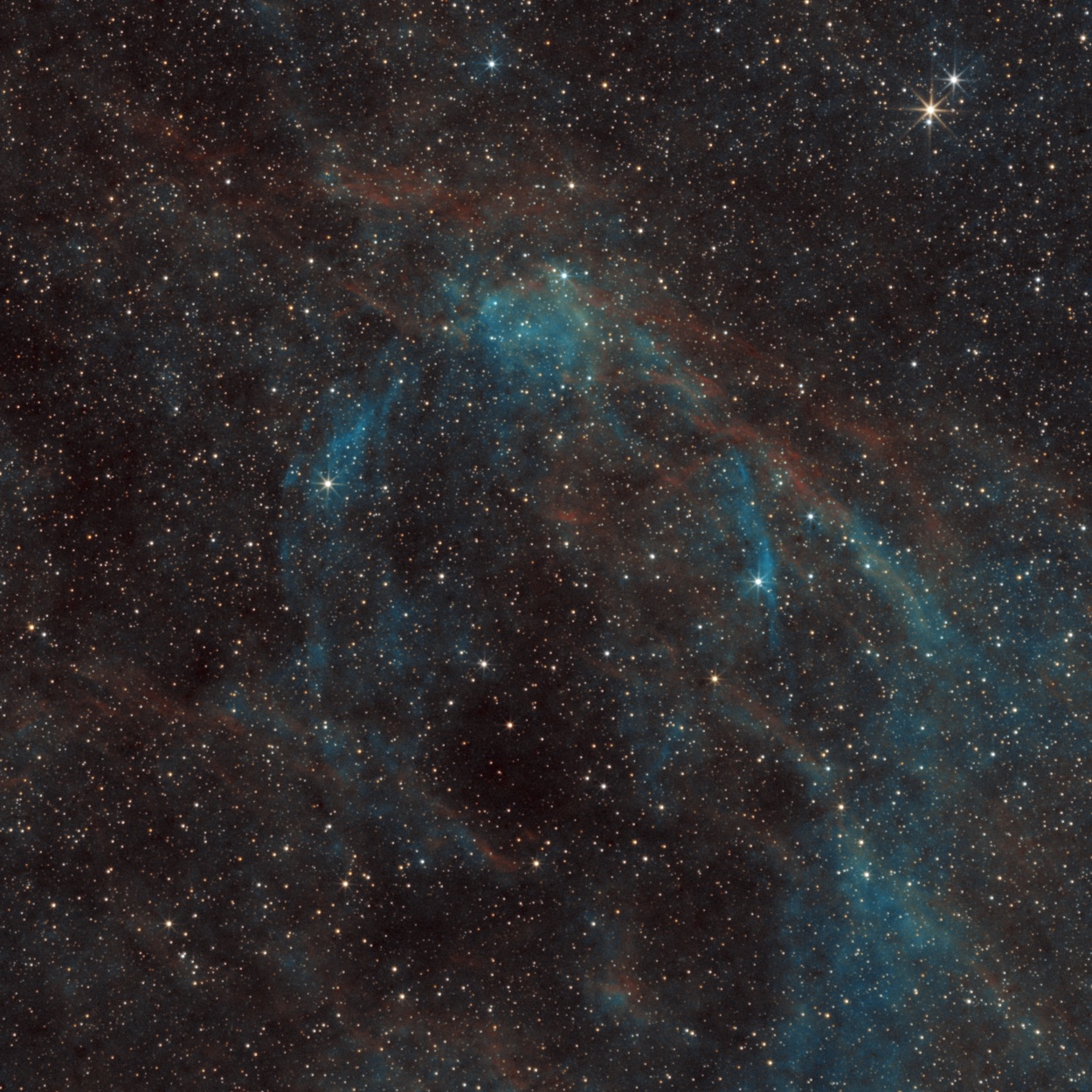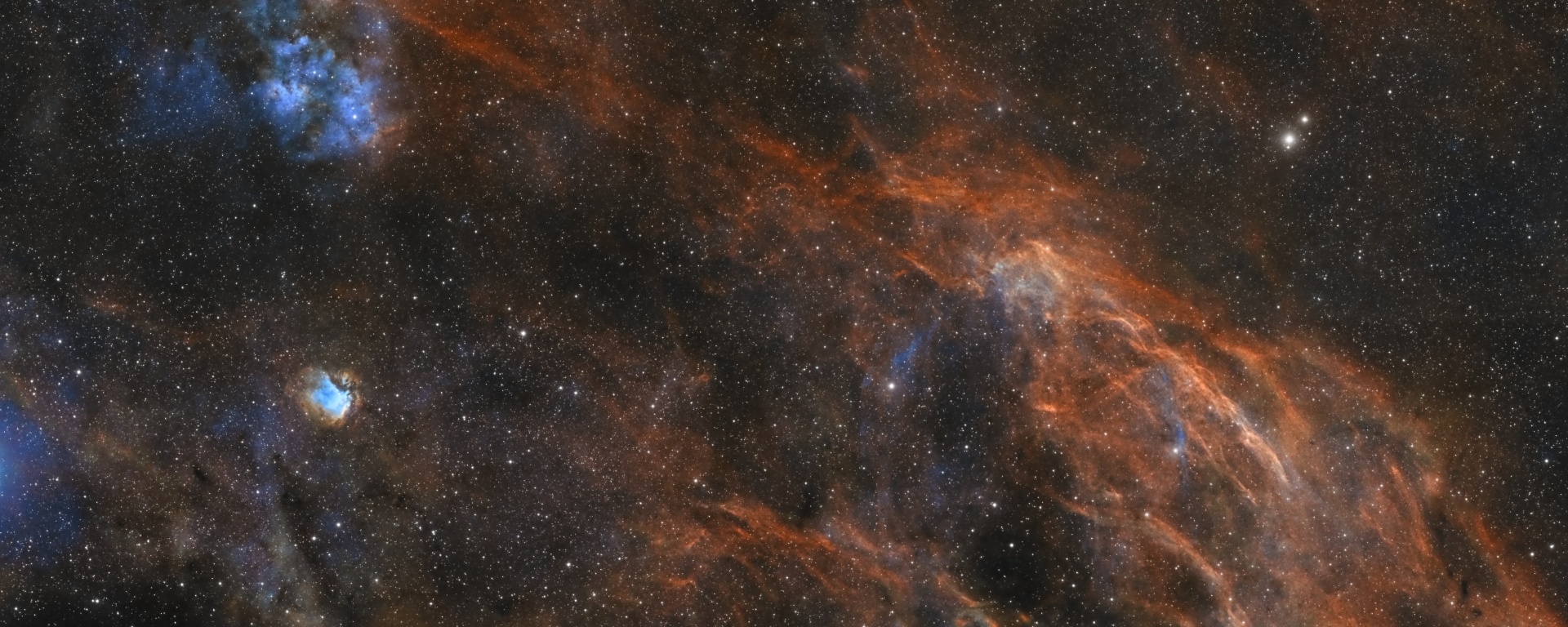Back in May 2021, Axel and I decided to go deep on a rarely imaged section of the Summer sky. We started searching the DSS survey on Telescopius.com and ended up with particular field in Cygnus. Most photographers use either long focal length setups to photograph specific nebula in the field, or they completely ignore this section in favor of the bright nebula such as the North America Nebula (NGC 7000), Sadr Region (IC 1318) or Crescent Nebula (NGC 6888) that are just outside the field of view. My folder for this project has the code name North Cygnus since it lies to the North of the latter.
I was going to collect OIII and SII with my Sigma 105 mm lens for the color mapping, while Axel would focus on the Ha only with his Canon razor-sharp 200 mm lens. To obtain the same field of view, Axel had to shoot a 2×2 mosaic with minimal overlaps.
It soon became clear that my flat correction was not good enough, especially in OIII. The usual t-shirt flat method produced an overly bright center on the Sigma lens. Sky Flats were better in the center, but the correction around the edges was far from perfect and it is almost impossible to separate real signal from the background. I think this is due to internal reflections 😦 The images below show highly stretched versions of my normal masterflat and sky masterflat, with their corresponding starless OIII stacks to show the background.

One way of correcting for this residual glow, is to use so-called night flats. The process is described by Fabian Neyer in a presentation that can be found here. Below are stretched versions of the night flat from 3 random 300 sec exposures in empty sections of the sky, extracted flat residual, and corrected masterflat.

The new method has greatly improved the glow around the edges of the OIII stack, but it was unfortunately not completely removed. This is especially noticeable in mosaics, and I will talk more about that in my next post (hint: it’s a BIG mosaic).
My Sigma 105 mm data was 2X drizzle stacked to match the resolution of the Canon 200 mm lens and to improve the star images as they were very blocky at 14 arcsec/px. Axel prepared his Ha mosaic in AstroPixelProcessor, I did the final registration and clean-up in PixInsight. STF stretched stacks of the 3 channels are shown below. Note: these are huge 60 Megapixel images! Click to show full size.



I prepared a SHO color map from starless images and used Ha as a base luminance layer. The OIII tone map was also added to the luminance layer to improve visibility and color of the bright OIII structures. Halos and spikes from the lens aperture blades were cosmetically corrected in GIMP. I decided to go for white stars as real star color does not make sense in a narrowband SHO palette.

Green is quite dominant in the image, so I processed the data further with SCNR and made adjustments to both contrast and color saturation. You can find Axel’s version of the data on his AstroBin page.

When I planned the project, I hoped there would be faint stuff in the top right but turns out there is really nothing there. The frame was cropped to improve the perception and framing of the S-shaped backbone of red nebulosity. I nicknamed this field the Tendrils of Cygnus; faint curly structures that crawl to the frame with bright patches that act as stems or resting spots for your eyes.

Technical details:
Date: 28, 30, 31 May 2021, 1, 2 June 2021
Sigma 105mm f/2.8 EX DG @f/4
Location: Herent, Belgium (Bortle 7)
Camera: ZWO ASI1600MM-C
OIII 3nm: 103 x 300s
SII 3nm: 92 x 300s
Total time: 16.2h
Axel data used:
Date: multiple nights in May-June 2021
Canon EF 200mm f/2.8 L II USM @f/4.5
Location: Paris, France (Bortle 8)
Camera: ZWO ASI1600MM-C
Ha 7nm : 80/80/73/81 x 180s
Total time: 15.7h
Project: 32h total exposure time
Now, there’s a TON of objects in this frame and I want to highlight several lesser known ones below since that was the focus of this project.
W63 or G 82.2+5.3 is a very large and extremely faint supernova remnant that lies in the center of the frame. My first encounter with this object was Nico Carver’s excellent 8-panel Cygnus Mosaic. The first professional multi-band images of this object can be found in this 2004 publication. That’s quite recent, so you can imagine it is not well known in the amateur community. You also need a setup with a very large field of view to capture the entire shell.
The crops below show the object in Ha, OIII and SII. I’m already using the most expensive, high-contrast 3nm OIII filters but this object really benefits from dark skies to improve the signal-to-noise ratio in OIII.



The OIII signal is extremely faint and the nebula is barely visible in a simple SII-OIII combination. Tone mapping was used on the OIII layer to enhance the visibility of the supernova remnant, with careful noise reduction to preserve most of the delicate filamentary structures in the blue shell.



I also added H-alpha to the luminance to push image contrast.

Planetary Nebula and HII regions: The H-alpha data from Axel shows a remarkable amount of detail at native resolution, despite the small focal length of this Canon 200 mm lens. I’ve processed several small crops to maximize visibility of these tiny structures. They are shown at 200% resolution (2 arcsec/pixel).



Check out these reference images from long focal length setups to compare details:


One thought on “Tendrils of Cygnus”